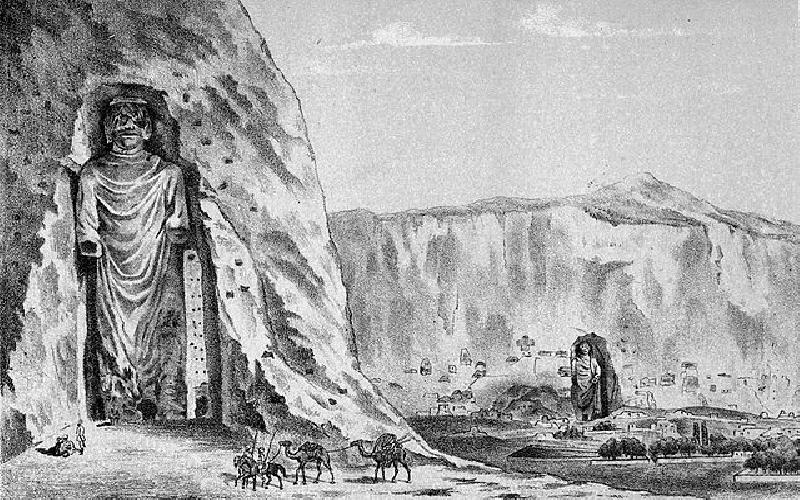South Asia houses Some of the Most Precious Heritage Sites of our History


South Asia offers a very rich variety of historical evidences, related to human civilization and its evolution during the ages. Many such sites have already been recognized by UNESCO. However, a lot more exists, and the UN agency needs to step up its efforts to recognize and protect them, before it is too late.
South Asia was the home of the cradle of human society, with some of the most ancient civilizations having evolved and prospered there. Greater awareness about its importance in human history and a stronger global commitment to preserve the physical testimonies of pre-historic and historic times can save this fast losing story of our ancestors. UNESCO has marked some sites as World Heritage, but much more may be required, before we run out of time ….
South Asia is host to a very large number of world heritage sites, recognition of the strong inheritance that belongs to the ancient civilisations that blossomed in this sub-continent over the last seven or more thousand years. Some of such sites have been recognized by United Nations Educational, Scientific and Cultural Organization (UNESCO), thereby facilitating their preservation. India has thirty five heritage sites, Sri Lanka eight, Pakistan six, Nepal four, Bangladesh three and Afghanistan two. Some sites, having been identified are yet to be added in this official list.
Some of these sites are also dangerously close to being lost!
Grandest of them all
The most spectacular of these sites is no doubt the Taj Mahal, the architectural marvel of the Moghul dynasty constructed in the seventeenth century by Emperor Shah Jehan in memory of his beloved wife Mumtaz Mahal. It is by large the greatest tourist attraction in this part of the world. The large white marble building is actually a tomb, but its beauty reflects the power of love and has been a part of literature over centuries. Other architectural marvels of this period include Red Fort, Humayun's Tomb, Agra Fort, Fatehpur Sikri and Qutab Minar in Delhi and Agra. Similar architectural marvels also include Jantar Mantar in Jaipur and the Hill Forests of Rajasthan, the Churches and Convents of Goa, and the Rani-ki-Vav (the Queen’s Stepwell) of Patan, Gujarat.
The Oldest of them all
Buddhist monastery at Sanchi and the Mahabodhi temple complex at Gaya are the most important places of Buddhist history. They are frequented largely by religious Buddhist including monks as part of their pilgrimage. Another very famous site is the Konark Sun temple in South India. The Khajuraho temple are considered the living example of passion and love that marks the sensuality and sexuality of the ancient civilisation. Another such site in Nepal is the birth place of Lord Buddha, Lumbini.
The Precious Abodes of Mother Nature
There are many natural sites too, like Kaziranga National Park, Manas Wild life sanctuary, Champaner and Keoldeo wild life sanctuaries. Another very famous and perhaps a unique site is the Sunderbans forests near Kolkata. All these are some of the rare abodes of world wide life. Then there are the cave structures, The Ajanta and Ellora caves need to be seen to be believed. So are Elephanta caves. The list of heritage sites in India is completed by Chhatrapati Shivaji Terminus, and the narrow gauge, hundred and ten years old mountain trains of Shimla and Darjeeling.
In Nepal one of the two heritage sites is the Mt Everest in Sagarmatha National Park, the highest point on Earth. Bangladesh has part of the Sunderban forests, in addition to the historic city and mosque of Bagerhat and the ruins of Buddhist Vihar at Paharpur. In addition, there is the Royal Chitwan Park.
The Earliest Civilizational Ruins
Pakistan hosts one of the oldest ruins of Indian civilisation in Moenjodaro. These are almost five thousand years old relics of a civilisation which blossomed alongside those of Egypt, China and others and which continue till today in the form of societies and culture of the subcontinent. Another site in Pakistan is Taxila, one of the two ancient Universities that prospered over two thousand years ago (the other being Nalanda in Bihar in India). These universities were the largest learning centres of the world in those times, and their destruction by invaders from Central Asia between eight and twelfth century marked the biggest loss for the society.
The Treasures that were Lost as the World Watched by
Afghanistan too has two sites in the list one of which was the 1600 years old Buddha statues of Bamiyan, which were unfortunately devoured by the frenzy of Taliban. The other site is the Minaret and ruins at Jam, a twelfth century old relic.
Need for Identification Other Sites
South Asia is full of such sites that are the last vestiges of ancient civilizations that are almost forgotten, partly because of our indifference and partly due to competing priorities of nations struggling to address poverty and human suffering. A helping hand, especially from an international cooperation, such as UNESCO, could be a life saving medicine for these dying and decaying treasures of humanity!
I moved to Chennai almost four years ago and wrote this article based on my experience then. Now, I think I understand this city relatively better than I used to in my first year here.
The moment the Spain landed in the Philippine soil and conquered the whole island, occupied it for 300 years and the day they withdrawn, our Muslim brothers in the south had been a pain on their neck. Even though the Muslim was defeated, they did not surrender to the Spanish Invaders.
Nature provides materials that are useful to Asian Art. Bamboo, wood, silk and many others are abundant in Asia and dominate its art motifs which are also inspired by nature.